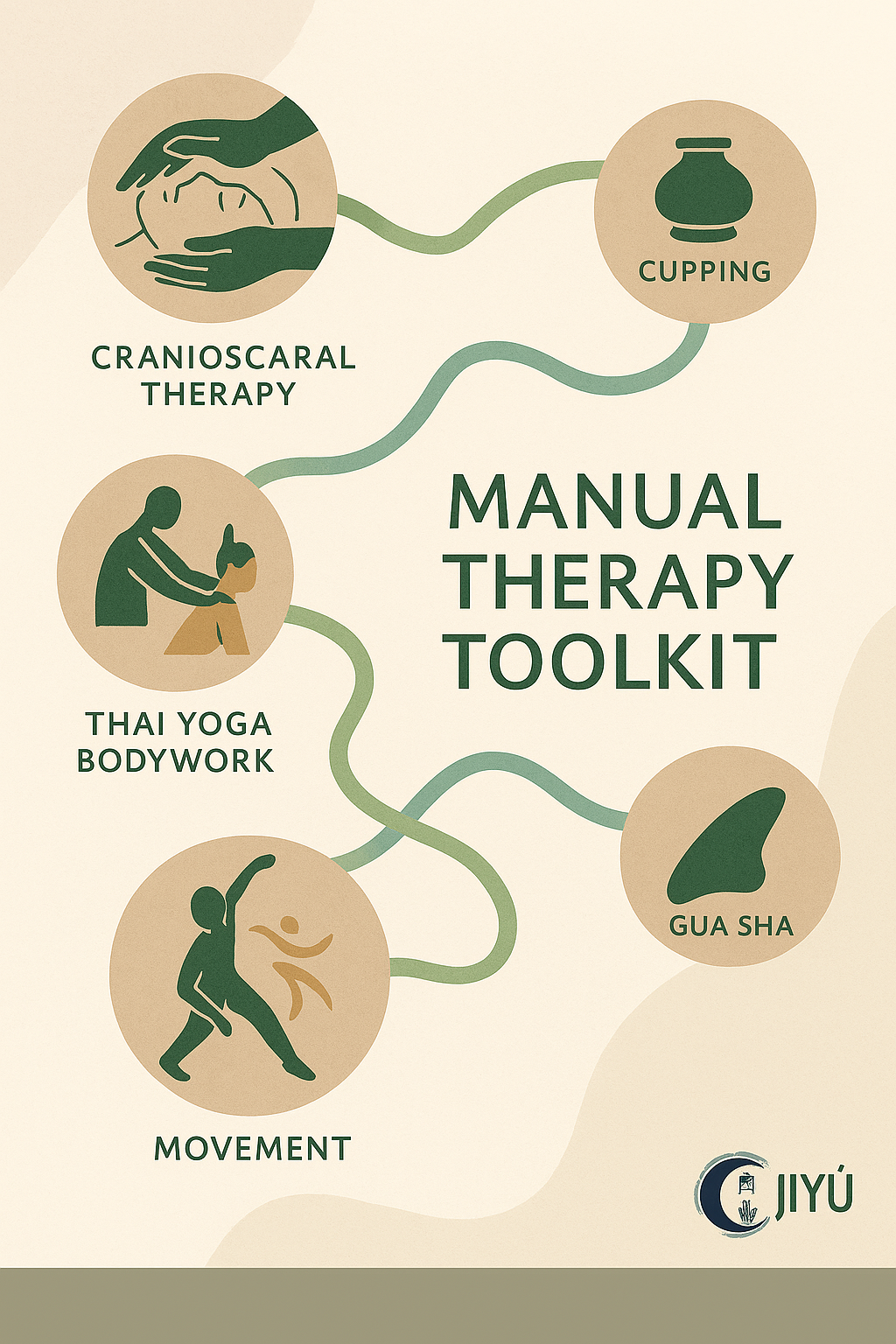Why I Don’t Call Myself a “Massage Therapist”
I don’t like calling myself a massage therapist. For most people, the first image that comes to mind is a spa setting—getting undressed, lying on a table, and receiving an oily rubdown to relax and unwind. There’s nothing wrong with that image or profession, but it doesn’t reflect what I do. Because that’s the dominant perception of massage, I often find myself boxed into a category that doesn’t fit. It makes educating potential clients and marketing my work an uphill battle.
Manual Therapist Instead of Massage Therapist
Massage is just one tool in a much larger toolkit. I prefer the term manual therapist instead of massage therapist because it more accurately reflects the scope of what I offer: Chinese clinical massage, Thai yoga bodywork, craniosacral therapy, visceral massage, qi-based treatments, cupping, gua sha, and somatic therapy. While a traditional massage therapist at a spa might follow a set routine or menu service, my focus is on restoring balance—structural, energetic, and functional. Each session is designed specifically for the person in front of me. Often, I don’t know which techniques I’ll use until my hands make contact and begin assessing the body, and I rarely stick to a single protocol. Most sessions are done clothed, and oil is seldom used. My approach leans more toward osteopathic and traditional medicine than conventional Western massage.
As one of my teachers says, we practice common-sense medicine:
If something’s cold, warm it.
If it’s hot or inflamed, cool it.
If it’s tight, relax it.
If it’s weak, strengthen it.
If it’s stuck, move it.
If it moves too much, stabilize it.
In short, we look for what works. Sometimes that means following a standard protocol, but more often it’s an intuitive combination of methods drawn from multiple traditions. I treat each discipline as a different lens—a way of seeing the body and the person through unique perspectives.
I view manual therapy, and every discipline I practice, as a form of medicine: a search for the right approach, dosage, and timing to eliminate dysfunction that causes pain, stress, or illness. Dysfunction rarely happens by chance—it often grows out of how we live, how we eat, move, breathe, and relate to the world. If we don’t address those underlying causes, symptoms inevitably return. My goal isn’t just temporary relief, but lasting transformation.
That’s why I draw on my background in martial arts, movement, personal training, therapeutic yoga, and Eastern philosophy. I didn’t pursue these disciplines as hobbies—they’ve saved my life more than once, freeing me from pain, depression, and chronic illness. They taught me to approach problems from multiple angles, to listen deeply, and to take responsibility for my own healing. They’ve helped me avoid unnecessary surgeries, medications, and medical costs. If I can help others do the same, I will.
My work is individualized manual therapy—an exploration of who you are, where you are right now, and what your body truly needs. No two people are the same, and even the same person isn’t the same from one day or season to the next. That’s why I don’t rely on routines, fixed disciplines, or formulas.
Manual Therapy as a Service
I see myself in a position of service—helping people heal, adapt, and perform at their best. I build long-term relationships that meet each client where they are and evolve over time. Together, we track progress, explore new methods, and adjust as life changes. The goal is to help you discover your own authentic path to health, not fit you into a prefabricated model of care.
Historical Massage Therapy
Chinese massage therapy
Massage therapy is one of the oldest forms of healthcare known to humanity, with references in Chinese medical texts dating back over 4,000 years. Only in modern times has touch-based healing been reduced to mere recreation. Yet human beings are social, co-regulating creatures—we are literally wired to heal through touch. Safe, skilled touch activates the parasympathetic nervous system, allowing the body to rest, repair, and reset. Unfortunately, cultural taboos and modern medical narratives have distanced us from one of our most natural and powerful healing tools.
Bodywork Therapy
Separating bodywork from movement, psychology, and healthcare is a disservice. A therapist who limits themselves to a single protocol or way of thinking can only solve one type of problem for one type of body. My aim is to be useful to everyone willing to receive care. Creativity is essential.
This integrative, hands-on approach complements other forms of care—medical doctors, physical therapists, chiropractors, acupuncturists, nutritionists, and psychotherapists—creating a complete and more effective path toward healing and wholeness.
If you have any questions about this content or you are interested in getting help from JIYÚ, call 919-885-4058 today.


